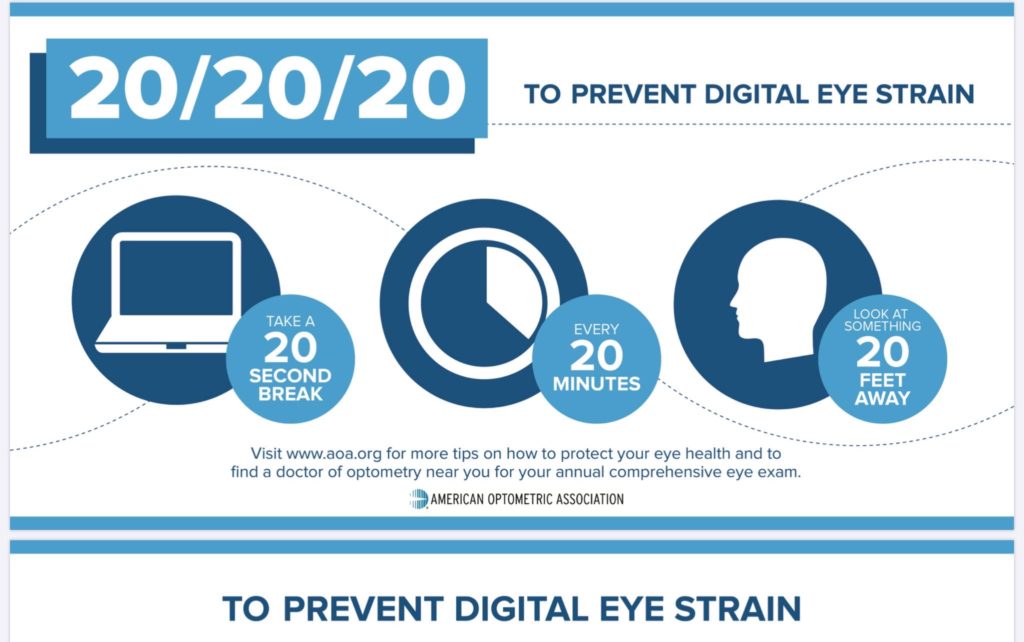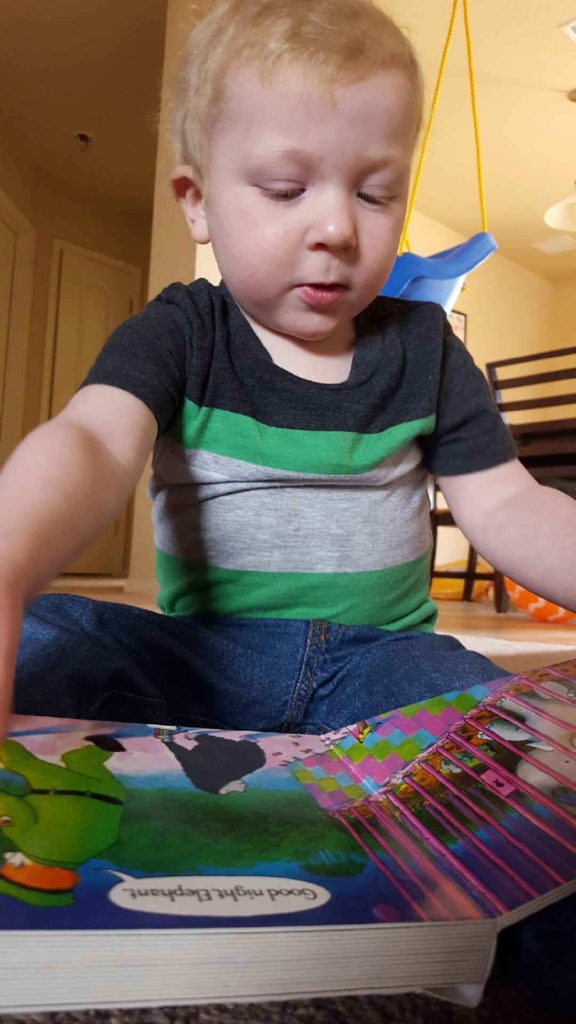
Digital Online Learning Stresses
In this article I would like to help you know how to recognize visual stress caused by digital online learning. I will also give a tip or two on how to help alleviate it. As a vision therapist I see children with visual symptoms that hold them back from performing their very best. As you read, please be aware that this is a simple activity that can be performed by anyone and will help with some symptoms of visual stress. If you notice other things about your child’s vision that doesn’t seem right, trust your gut and visit an optometrist. Be sure to explain the symptoms you are seeing so he can help your child in the proper manner.
I had a patient whose mother asked me about the eye strain her daughter was experiencing with her digital online learning. My response was to take eye breaks. The common rule from the American Optometric Association calls it 20/20/20. Every 20 minutes look 20 feet away for 20 seconds.
This 20 minutes is a great start but it is important to know your child. Your child might need less time before they take a visual break.
Symptoms of Eye Strain
When your child is doing close work, such as reading, or on the computer watch for signs such as
- Covering an eye
- Blinking excessively
- Rubbing their eyes
- Losing focus
- Moving head a lot
- Words blurring
- Words moving on the page
- etc.
When to take a break
When the above symptoms are being manifest, it is a signal that a break is needed. These symptoms are also signs that they should have already taken a break. If these symptoms are showing up at 10 minutes, then the child needs a break at 9 minutes. I told this parent to pay attention to what is happening with her child and adjust the time accordingly.
If the child starts showing symptoms at 2 minutes before they break, so be it, let them have a break. Eventually they will gain stamina and be able to go longer.
Be the advocate
As a parent, grandparent, guardian, YOU need to be the advocate for your child! Do what is best for YOUR child, every child is different.
Break a Move
Another vital part of taking frequent visual break is to let the child get up and move around. Movement is vital to a child’s learning experience. When it is stymied the brain begins to shut down.
Since these breaks and movement are so vital to success we are going to create a game. It is a 2 part game – one part breaks – one part moving. Let’s call it the Break A Move game.
Part 1 – “Break”
When taking the necessary eye break, at the appropriate time, find new and fun things to look at or gaze upon.
- Open the curtain and see what is going on outside
- Watch the birds outside
- Put fun posters on the wall
- Put up pictures of different places they want to visit
- Play I Spy
Part 2 – “A Move”
After a few times of taking the needed visual breaks then it is time to move around. This is my favorite part because it is time to just “bust a move” and get the wiggles out. Here are some ideas, but I am sure you can come up with many more.
- Start dancing
- Running
- Hoping
- Skipping
- Be creative and have fun!
Education is Key
Hopefully this simple “game” will help relieve some of the visual stress happening with Digital and online learning.
Visual stress can happen at home or at school so it is important for the child to understand when they need the break. It is important to help them learn to self monitor so they can be more successful. Self monitoring includes knowing when a break is needed.
A standard practice in the vision therapy office where I work is to educate the patient on awareness of process. We help them understand what their eyes are doing. Help them recognize the feeling of tightness and relaxing. Recognize how their body is reacting to therapy. We then teach them what to do with that information. Once a patient understands what is happening they become a lot more engaged and self motivated.
Breaks DON’T Help, what then?
Sometimes breaks aren’t enough. If your child struggles with the symptoms described above on a regular basis, you may want to take this questionnaire. There may be other symptoms causing your child to not be successful. This questionnaire would provide an optometrist the needed information to help your child. They would hopefully them perform a comprehensive eye exam and if necessary refer you to a behavioral optometrist.
I work for a Behavioral Optometrist as a vision therapist. Patients come in with visual problems which often cause learning issues. Unfortunately, the child doesn’t always know they have a problem. Children think they see like everyone else does, or that everyone sees like they do. These kids often are the hardest working ones in the classroom. Unfortunately, it doesn’t show because they are sometimes slow and don’t get their work turned in. Students who struggle, often give up because they work so hard and it doesn’t feel like they are accomplishing anything. They then come into our office and we do some vision therapy, then things begin to change! Within a few months they begin to understand what is going on with their eyes and they can control what is happening. At this point, when their vision is improving, they begin to enjoy learning.
I had one patient who absolutely hated reading when they started Vision Therapy. After a couple months of therapy, he loved reading so much his mom found books in his bed!

Is this only for kids?
Kids aren’t the only ones who struggle with visual stress. Beware of yourself and your loved ones. The American Optometric Association has a great article about how to take care of our eyes when experiencing eye strain. I hope you will take the time to read it and apply not only the principle I taught you today, but also the AOA’s ideas.
Cyber world watch out – We got this!
Take care of yourselves and your family during this new Digital Online learning experience. We got this!